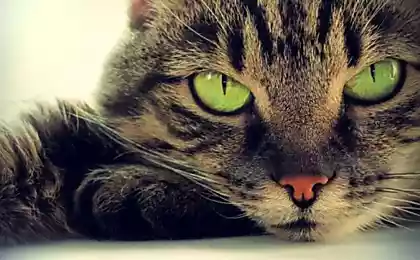345
Allergic cat disease

A food Allergy develops as an immunologic reaction of the organism cats on some proteins included in the composition of consumed forage. The most important type of food allergies are hypersensitivity reactions of types 1, 3 and 4. Food Allergy, the frequency of development takes the second place among the various allergic reactions in this species. It can affect animals at any age, regardless of sex. A certain degree of susceptibility to this disease are cats Siamese and Burmese breeds. The main clinical manifestations of food Allergy serve itching of varying severity (from mild to intense) and also, in some cases, other reactions in the skin and gastrointestinal tract (diarrhea and vomiting). It can also show clinical signs, usually referred to eosinophilic granulomatous complex. For example, with food allergies cats on the face, the neck and the head may appear scratches, symmetrical alopecia or miliary dermatitis. The lesions appear as a result of scratching and, in contrast to dogs, bacterial and fungal infections complicate the course of these pathological processes rarely. Based on the observations of practising veterinarians estimated that about 20-30 % of all cases of food allergies in cats are associated with atopy or allergic to flea bites. Clinical effect of corticosteroids is variable.

The diagnosis is confirmed on the basis of positive results of food allergic test that is carried out pogem exclusion from the diet of the animal, all previous food (elimination diet). Last, prepare yourself and give the cat without any additional components for at least 8 weeks (sometimes up to 10 weeks). An elimination diet should consist of two ingredients: one protein source and one carbohydrate source that a sick cat had never received. Such sources, for example, can be: dark meat, lamb, venison, pork, sweet potatoes, potatoes, tapioca (cassava flour)
Use ready-made feeds prepared from hydrolyzed proteins, not because it is not possible to exclude adverse reactions to the constituent feed ingredients. However, ready to feed, with protein hydrolysates represent an excellent tool for therapy (6) (editor's note: In fact, adverse reactions to food additives, included in the prepared feeds, develop in small animals is extremely rare).

If, after feeding an elimination diet for a specified period of time itchy skin the cat disappears, the diet gradually introduce one by one the components of the old diet until then, until the identified food allergen. Intradermal Allergy tests and laboratory (in vitro) Allergy test with food allergies to use for diagnostic purposes is impossible. Histological examination allows to reveal changes of the tissues, indicating the presence of hypersensitivity reactions, but does not allow to establish whether the developed disorders result from allergic reactions to food components. Usually in such cases, reveal the superficial or deep perivascular dermatitis with predominance among the cellular elements of eosinophils and mast cells. In some cases, see the presence of intramural (mural) folliculitis.
published
Source: /users/1092
























